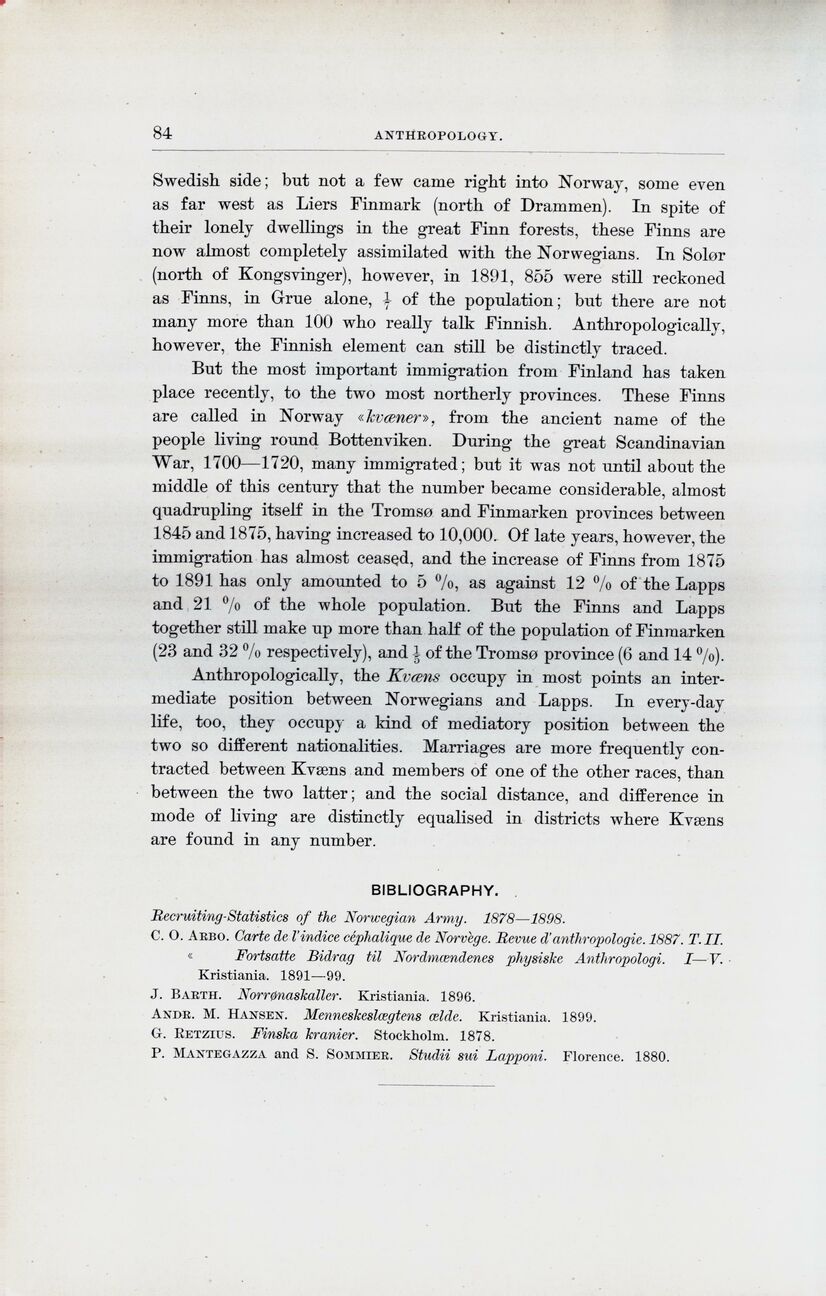
Full resolution (JPEG) - On this page / på denna sida - Anthropology, by Andr. M. Hansen

<< prev. page << föreg. sida << >> nästa sida >> next page >>
Below is the raw OCR text
from the above scanned image.
Do you see an error? Proofread the page now!
Här nedan syns maskintolkade texten från faksimilbilden ovan.
Ser du något fel? Korrekturläs sidan nu!
This page has been proofread at least once.
(diff)
(history)
Denna sida har korrekturlästs minst en gång.
(skillnad)
(historik)
Swedish side; but not a few came right into Norway, some even
as far west as Liers Finmark (north of Drammen). In spite of
their lonely dwellings in the great Finn forests, these Finns are
now almost completely assimilated with the Norwegians. In Solør
(north of Kongsvinger), however, in 1891, 855 were still reckoned
as Finns, in Grue alone, ⅐ of the population; but there are not
many more than 100 who really talk Finnish. Anthropologically,
however, the Finnish element can still be distinctly traced.
But the most important immigration from Finland has taken
place recently, to the two most northerly provinces. These Finns
are called in Norway «kvæner», from the ancient name of the
people living round Bottenviken. During the great Scandinavian
War, 1700—1720, many immigrated; but it was not until about the
middle of this century that the number became considerable, almost
quadrupling itself in the Tromsø and Finmarken provinces between
1845 and 1875, having increased to 10,000. Of late years, however, the
immigration has almost ceased, and the increase of Finns from 1875
to 1891 has only amounted to 5 %, as against 12 % of the Lapps
and 21 % of the whole population. But the Finns and Lapps
together still make up more than half of the population of Finmarken
(23 and 32 % respectively), and ⅕ of the Tromsø province (6 and 14 %).
Anthropologically, the Kvæns occupy in most points an
intermediate position between Norwegians and Lapps. In every-day
life, too, they occupy a kind of mediatory position between the
two so different nationalities. Marriages are more frequently
contracted between Kvæns and members of one of the other races, than
between the two latter; and the social distance, and difference in
mode of living are distinctly equalised in districts where Kvæns
are found in any number.
BIBLIOGRAPHY.
Recruiting Statistics of the Norwegian Army. 1878—1898.
C. O. Arbo. Carte de l’indice céphalique de Norvège. Revue d’anthropologie. 1887. T. II.
« Fortsatte Bidrag til Nordmændenes physiske Anthropologi. I—V.
Kristiania. 1891—99.
J. Barth. Norrønaskaller. Kristiania. 1896.
Andr. M. Hansen. Menneskeslægtens ælde. Kristiania. 1899.
G. Retzius. Finska kranier. Stockholm. 1878.
P. Mantegazza and S. Sommier. Studii sui Lapponi. Florence. 1880.
<< prev. page << föreg. sida << >> nästa sida >> next page >>